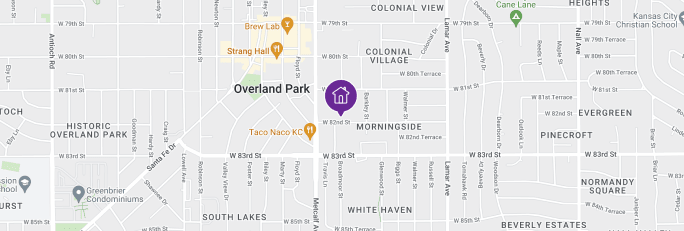Make the best senior care decision

A Guide to Elder Care and Senior Living Costs

Your family has determined an elderly loved one needs extra care to age happily and safely. But with a variety of senior living options available, how do you decide which one best fits their needs?
Key Takeaways
- Senior living costs vary based on care needs and preferences. Some cost variables include location, amenities, living spaces, care level and more.
- Year-over-year changes in senior living costs vary greatly by care type. The costs of assisted living rose from 2019-2020, while adult day care costs dropped.
- The median cost of assisted living in 2020 was $4,300/month. Other care types may cost more or less, depending on the level of care they provide.
- There are a number of ways to pay for senior living. Payment methods include veterans benefits, home equity, tax credits, government assistance and more.
The cost of elder care is a major deciding factor for many families. Knowing what costs to expect from each care type from the outset can simplify the decision-making process and ensure you aren’t in for surprises down the road.
Learn how senior care providers calculate costs and how prices fluctuate over time. Then, compare these nine popular care options to find the best fit for your aging loved one’s financial, emotional, and health care needs.
Senior living costs explained
Senior care costs vary depending on health care needs and personal preferences. Some people want to age at home with assistance, while others prefer the ease and readily available help of senior living.
Each year, Genworth conducts a Cost of Care Survey in conjunction with CareScout. Nearly 15,000 home care providers and senior living communities provided data for the 2020 survey, and statistics in this article rely on their findings.
Generally, the cost of assisted living and other types of elder care fluctuates based on level of care provided and other external factors. Some components that affect senior care costs include:
- Location. Typically, elder care costs in urban areas exceed those in non-urban communities by more than 15%.
- Level of medical care. Communities with on-site doctors, nurses, and physical therapists often cost more.
- One-on-one interaction. Full-time in-home care, or one-on-one supervision, generally exceeds the cost of assisted living in group settings.
- Amenities. A community with pools, tennis courts, and restaurant-style dining will likely be more expensive than one without those amenities.
- Living spaces. A personal apartment or private room generally costs more than a shared room in the same community.
Remember: Living at home isn’t free. Even if your loved one owns their house and doesn’t need to pay rent, other costs can add up over time, like upkeep, routine home repairs, and home modifications to support aging in place.
The changing costs of senior care
Elder care costs are rising at different rates. Between 2019 and 2020, the cost of in-home care jumped by about 4.4%. Assisted living costs surged by 6.15%, while nursing home costs remained relatively stable, with an increase of only 3%. Senior center and adult day care costs actually dropped by over 1%, according to Genworth.
While the year-over-year changes in senior living costs vary greatly by care type, those surges and drops even out over time. The five-year annual growth of all care types has been between 3% and 4%, so it’s important to anticipate overall change rather than annual spikes and valleys.
The coronavirus pandemic has also influenced senior care costs in a way that’s likely to last for years to come. Lower occupancy, decreased admittance, and staffing concerns have caused costs to rise sharply, according to McKnights Senior Living. Vaccines in senior living have helped residents return to a “new normal” with activities and social interaction. Although prices are balancing out, they’re likely to remain above pre-pandemic levels.
Elder care costs by care type
The costs below are national median rates from Genworth, unless otherwise noted. Median means half of the providers surveyed had lower costs, while half had higher costs.
How much does assisted living cost?
The median cost of assisted living in 2020 was $4,300 a month.
Assisted living is the most common senior living option throughout the United States. Developed in the late 1980s, assisted living is designed for seniors who can’t live independently but don’t need 24-hour nursing care. Most assisted living communities offer planned activities, restaurant-style dining, housekeeping, and help with activities of daily living (ADLs), such as dressing and bathing. They usually don’t offer skilled nursing. Generally, seniors and families pay assisted living costs through all-inclusive monthly rent, which covers everything from meals and transportation to utilities.
How much does memory care cost?
The cost of memory care is generally the cost of assisted living, plus $1,000 to $2,500 a month for specialized memory services.

Get a tailored list of senior living options.
Our free tool provides senior living options based on your unique situation and budget.
Memory care is specialized care for seniors who have Alzheimer’s disease, other forms of dementia, or significant cognitive decline. It offers many of the same benefits as assisted living, including help with ADLs, meal services, and health care as needed. To help prevent wandering, most memory care communities provide 24-hour supervision with a higher staff-to-resident ratio, along with calming environments and carefully designed layouts to reduce confusion and promote familiarity. Memory care is often provided in a separate wing or area of an assisted living community, and prices fluctuate based on the assisted living community’s cost and level of care.
How much does home care cost?
Home care costs $23.50 an hour, or $4,703 a month for 40-hour weeks.
Home care agencies generally charge by the hour. Home care aides provide a combination of household help and personal care, such as companionship, help with ADLs, meal preparation, housekeeping, and transportation. However, they don’t provide nursing care. There may be packages or reduced rates for 40-hour-a-week services to care for your loved one while you work.
How much does home health care cost?
Home health care costs $24 an hour.
Home health care isn’t the same as home care. While home care offers daily assistance, home health care provides clinical medical supervision. Home health care workers are registered nurses and therapists licensed to administer medication, give shots, and help with wound care or rehabilitation.
Home health care requires a physician’s prescription and is typically covered by Medicare or private insurance.
How much do nursing homes cost?
Nursing homes cost $7,905 a month for a shared room, or $8,990 a month for a private room.
Also called skilled nursing facilities, nursing homes provide high-level, around-the-clock medical care. Typically, people in nursing homes have severe, debilitating physical or mental conditions that leave them unable to live independently. They may be bedridden or in need of daily skilled nursing care.
Nursing homes require a physician’s prescription and physical examination before accepting new residents. Since they provide 24-hour medical care in addition to meals, activities, and assistance with ADLs, nursing homes are generally more expensive than other senior living options.
Medicare covers short-term nursing home stays, but not long-term care.
How much does adult day care cost?
Adult day care costs $73 a day.
Adult day cares offer supervision, socialization, and structured activities for seniors. Some facilities provide meals, transportation, and personal care. Generally, adult day cares have limited hours and are ideal for seniors living with family members who provide full-time care.
How much do board and care homes cost?
Board and care home costs vary widely, from $1,500-$10,000 a month.
Board and care homes — or residential care homes — are houses equipped, adapted, and staffed to care for a small number of senior residents, generally between two and 10. Though they are often considered a subset of assisted living, residential care homes are generally privately owned and can provide services accordingly. The cost varies tremendously throughout the country, depending on real estate value, house type, and care services. For instance, a pristine mansion with professional chefs in California and a cozy cottage in the Midwest could both serve as care homes, but each would have different pricing based on amenities and location.

Senior living facilities near you
There are senior living facilities in your area
How much do continuing care retirement communities (CCRSs) cost?
The cost of CCRCs varies greatly by pricing structure, ownership, and services offered.
CCRCs are communities with accommodations for independent living, assisted living, and skilled nursing, offering residents a continuum of care. A senior can move between levels of care as needed, progressing as their health declines without having to leave the community.
CCRCs have contract-based pricing, which can vary enormously by age and circumstance. The average initial payment is $329,000, according to a study from commercial real estate services firm CBRE. Upon move-in, residents will pay a median set rate of $3,000 a month, no matter their level of care. However, some CCRCs offer a rental model with no up-front fee. Rent for an independent living unit is often $3,000 to $6,000 a month, and costs increase to reflect levels of care. In some CCRCs, residents can purchase on-campus homes within the community for independent living, and the sale of that home goes to pay for increased care as they age.
How much does independent living cost?
Independent living costs $2,552 a month.*
Independent living communities are a great option for seniors who require very little assistance. Most have occasional social and recreational activities, as well as amenities comparable to a luxury planned community, like pools and fitness centers. Some also offer restaurants with prepared meals and light housekeeping services. Senior apartments, a type of independent living, are usually restricted to age 55+ to ensure a quiet retirement, but they don’t feature dining options or in-home services. Pricing generally includes amenities, utilities, and home owner’s association (HOA) fees (if applicable).
*Genworth doesn’t track independent living costs; this figure is from A Place for Mom’s 2018 annual cost index and has likely grown over the past two years, based on market price fluctuation. However, no national data is available.
Ways to pay for senior care
Some of these price tags may seem daunting, but there are many ways to save money on senior living costs. From veterans benefits to home equity, tax credits, and government-funded insurance programs, learn more about saving for senior care in our complete guide to paying for long-term care.
Each family’s finances are different. Reach out to one of A Place for Mom’s 400 free, local experts today to find a great senior living fit for your loved one.
Sources
McKnights Senior Living. “COVID-19 linked to ‘substantial cost increases’ in assisted living: survey.”
CBRE. “Continuing care retirement communities | Market insight.”
Genworth. “Cost of Care Survey: Summary and Methodology.”
Senior Living Facilities Near Me
Find a senior living facility
There are <strong></strong> facilities near ,
View senior living facilities
The information contained in this article is for informational purposes only and is not intended to constitute medical, legal or financial advice or create a professional relationship between A Place for Mom and the reader. Always seek the advice of your health care provider, attorney or financial advisor with respect to any particular matter and do not act or refrain from acting on the basis of anything you have read on this site. Links to third-party websites are only for the convenience of the reader; A Place for Mom does not recommend or endorse the contents of the third-party sites.